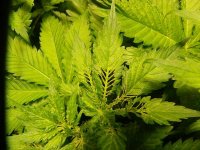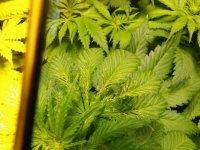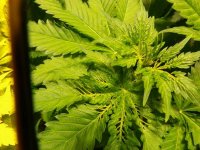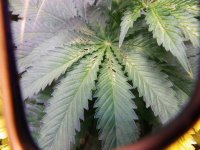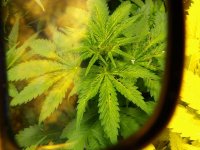C
c-ray
FE if you mix one cup soil mix with one cup distilled water shake for a minute what does it say for EC or ppm?
0.6-0.8 EC is a good range for peak flowering according to the Reams school
do this at a few soil depths in a few plants and report back please
0.6-0.8 EC is a good range for peak flowering according to the Reams school
do this at a few soil depths in a few plants and report back please

